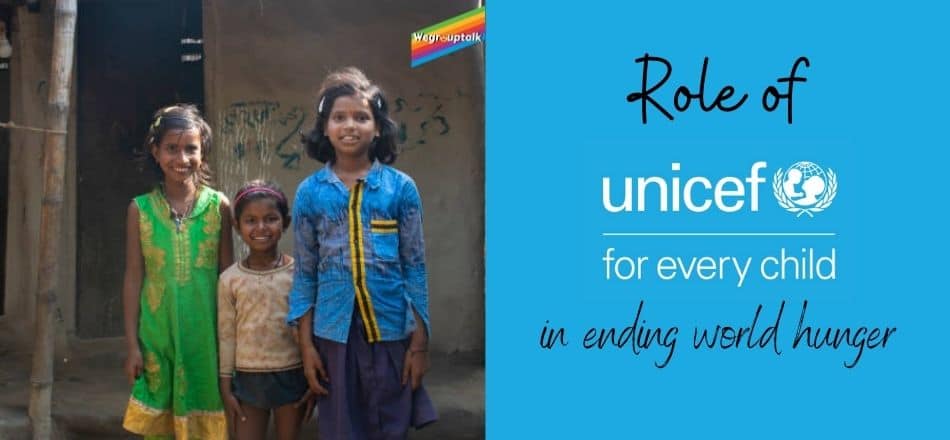Have you ever thought about this world’s hunger indices and possibly how many people sleep hungry every day? Or how many children die because of hunger? Or how many people out there are malnourished? Well, such questions are endless, and the answers to them are just sad. But as a step towards humanity and for the betterment of the place we live in, some people and organizations work towards it.
Hence, to eradicate all this, many organisations worldwide are working towards ending hunger in this world. Some globally known organisations are- World Food Programme, The Hunger Project, Bread for the World, Clean Cooking Alliance, Action against Hunger, Akshaya Patra, UNICEF.
Now let us look at what UNICEF is doing to end world hunger.
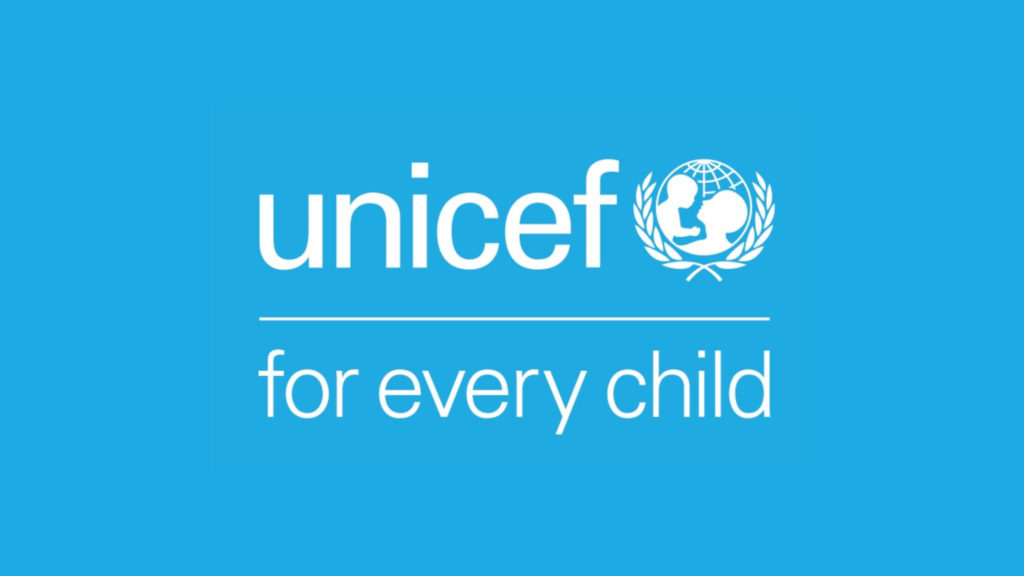
What is UNICEF?
UNICEF, or the United Nations Children’s Fund, is a United Nations agency responsible for providing children worldwide with humanitarian and developmental assistance. With 192 countries and territories, the agency is among the most widespread and recognizable social welfare organizations globally. The activities of UNICEF include:
- The provision of immunization and disease prevention by UNICEF.
- The administration of care for HIV-positive children and mothers by UNICEF.
- The enhancement of childhood and maternal nutrition by UNICEF.
- The improvement of sanitation by UNICEF.
- The promotion of education by UNICEF.
- The provision of emergency relief in response to disasters by UNICEF.
The successor to the International Children’s Emergency Fund (ICEF), founded by the United Nations in 1946, is UNICEF. Administration of Relief Rehabilitation to provide urgent relief to children and mothers affected by World War II. The same year, the United Nations could further institutionalize post-war relief work. The General Assembly established the United Nations International Children’s Emergency Fund.
In 1950, UNICEF’s mandate was expanded to address children and women’s long-term needs, particularly in developing countries. The organization became a permanent part of the United Nations Structure in 1953. Its name was later changed to its present form, although the original acronym is preserved.
UNICEF depends solely on government donations and private donors. As of 2018, its overall revenue was $5.2 billion, two-thirds of which came from governments; private organizations and individuals contributed the remainder through national committees. It is lead by a 36-member executive board that sets up policies, approves projects, and supervises administrative and financial plans.
The board consists of members of the government chosen by the Economic and Social Council of the United Nations, usually for three-year terms. The initiatives of UNICEF emphasize the creation of community-level services to support children’s health and well-being.
With a network comprising 150 country offices, headquarters, and other facilities and 34 ‘national committees’ carrying out its mission through programs established with host governments, most of UNICEF’s work is in the field. Seven regional offices provide country offices with technical assistance as needed. At the same time, its Supply Division, located in Copenhagen and New York, helps provide essential aid and services for over $3 billion.
Recently a UN report had said that “global hunger continues to rise. Eight hundred twenty-one million people now hungry and over 150 million children stunted, putting the hunger eradication goal at risk. “According to a report published in Rome, July 13, 2020 – More people are going hungry, an annual United Nations report has reported.
Over the last five years, tens of millions have entered the chronically malnourished ranks. Countries worldwide continue to struggle with different types of malnutrition. The new version of the State of Food Security and Nutrition in the World, released today, reports that in 2019 nearly 690 million people went hungry, up from 10 million in 2018 and nearly 60 million in five years.
High prices and poor sustainability also mean that billions are unable to eat nutritiously or healthily. In Asia, the hungry are the most numerous, but in Africa, they are expanding fastest. Across the globe, the study predicts that by the end of 2020, the COVID-19 pandemic will plunge over 130 million more people into chronic hunger.
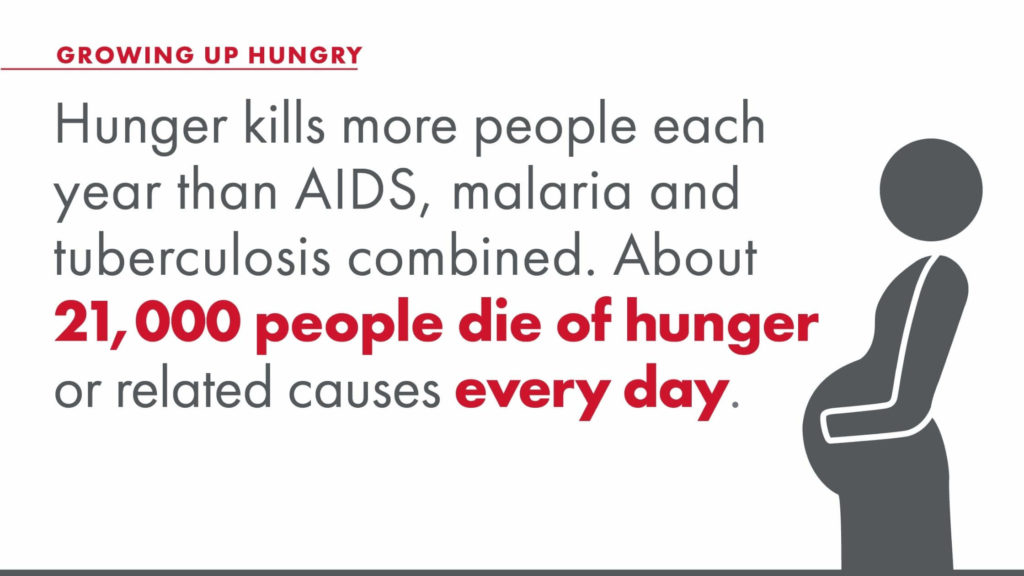
The State of Food Security and Nutrition in the World is the most authoritative global study that tracks ending hunger and malnutrition. (In the pandemic context, flare-ups of acute hunger have seen this number escalate further at times.)
It is developed jointly by the United Nations Food and Agriculture Organization (FAO), the International Fund for Agricultural Development (IFAD), the Children’s Fund of the United Nations (UNICEF), the World Food Programme of the United Nations (WFP), and the world health organization (WHO).
Five years after the world committed to eliminating hunger, food poverty, and all types of malnutrition, we are already off-track to achieve this aim by 2030,” the heads of the five agencies warn in the Foreword.”
Explanation of the hunger numbers
Critical data updates for China and other populated countries in this edition have contributed to a significant reduction in estimates of the global number of hungry people, to 690 million at present. However, there has been no shift in the pattern.
The same conclusion is drawn by revising the entire hunger sequence back to 2000: chronic hunger slowly began to increase in 2014 after gradually decreasing for decades and continues to do so. Asia also has the highest number of undernourished people in its history (381 million). Africa, led by Latin America and the Caribbean, is second (250 million) (48 million).
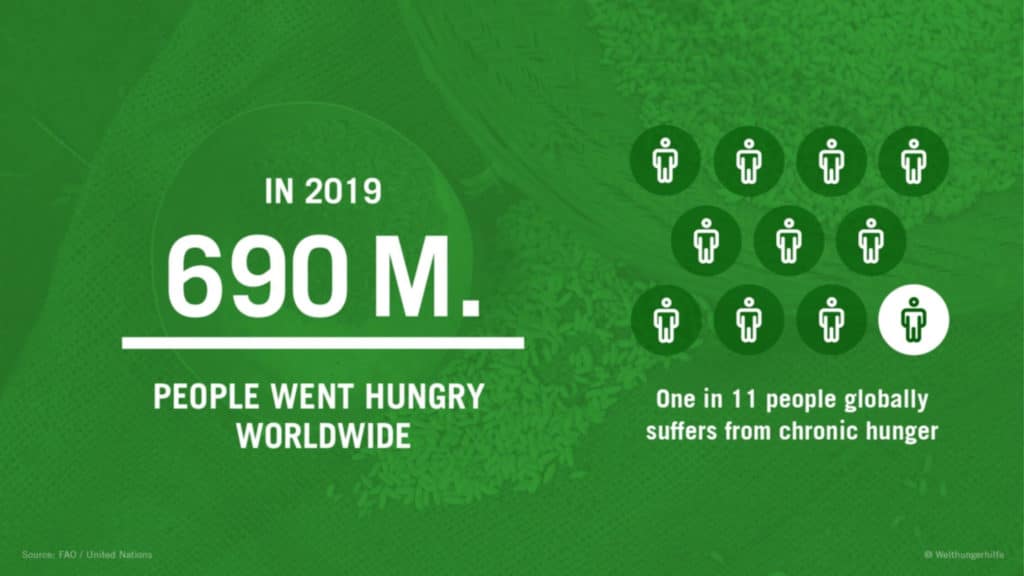
The global prevalence of undernourishment has improved marginally to 8.9 %, or the total percentage of hungry people. Still, the absolute figures have risen since 2014. This means that hunger has risen alongside the global population over the last five years. This conceals significant regional disparities: with 19.1% of its population undernourished.
Africa is the hardest-hit country and becomes more percentage terms. In Asia (8.3 %) and Latin America, and the Caribbean, this is more than double the average (7.4 %). Despite current trends, Africa will be home to more than half of the world’s chronically hungry population by 2030.
The toll of the pandemic
The COVID-19 pandemic intensifies global food systems’ weaknesses, and inadequacies as progress in the battle against hunger stalls understood as all the activities and processes affecting food production, distribution, and consumption. While the full effect of the lockdowns and other containment steps is too soon to be determined.
The study estimates that, due to the economic recession caused by COVID-19, more than 83 million people, and approximately as many as 132 million, may go hungry in 2020. The setback casts more doubt on the achievement of Sustainable Development Goal 2 (Zero Hunger).
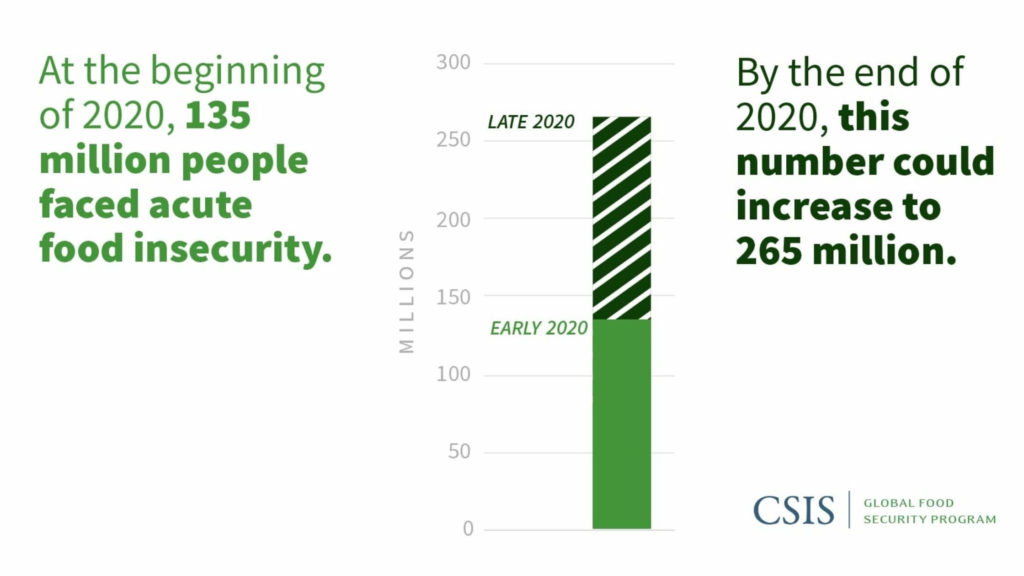
Unsafe diets, food shortage, and malnutrition
It is about more than securing enough food to live to resolve hunger and malnutrition in all its forms (including undernutrition, micronutrient shortages, overweight, and obesity): what people eat, particularly what kids eat, must also be nutritious. But the high cost of nutritious foods and the poor availability of balanced diets for large numbers of families are key obstacles.
The study provides proof that the international poverty level costs much more than US$ 1.90/-day for a healthy diet. This places the price of even the least expensive nutritious diet at five times the expense of just filling the stomach with starch.
The most expensive food classes globally are nutrient-rich dairy products, fruits, vegetables, and protein-rich foods (plant and animal-sourced). A whopping 3 billion individuals or more can not afford a balanced diet, the new figures are. 57% of the population in sub-Saharan Africa and southern Asia, but no area, including North America and Europe, is spared. Partly as a consequence, it seems that the race to end malnutrition is compromised.
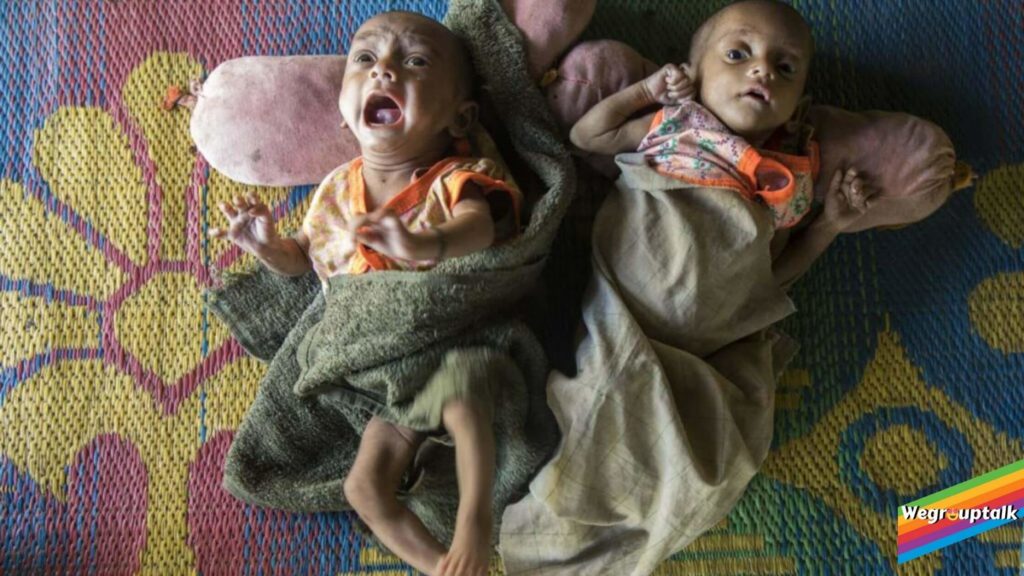
A call to action: End Hunger
The study argues that a global transition to healthier diets will help manage the backslide to hunger once sustainability factors are considered while providing enormous savings. It calculates that such a change would make it possible to almost fully cover the health costs associated with unhealthy diets, expected to hit US$ 1.3 trillion per year in 2030. In contrast, the social cost of greenhouse gas emissions related to diets, estimated at US$ 1.7 trillion, could be dropped down to three-quarters.
To reduce the expense of nutritious foods and increase the affordability of healthier diets, the study recommends transforming food systems. Although specific solutions can vary from country to country, and even within them, the ultimate responsibility lies in interventions in the food supply chain, the food system, and the political economy that forms trade, public spending, and investment policies.
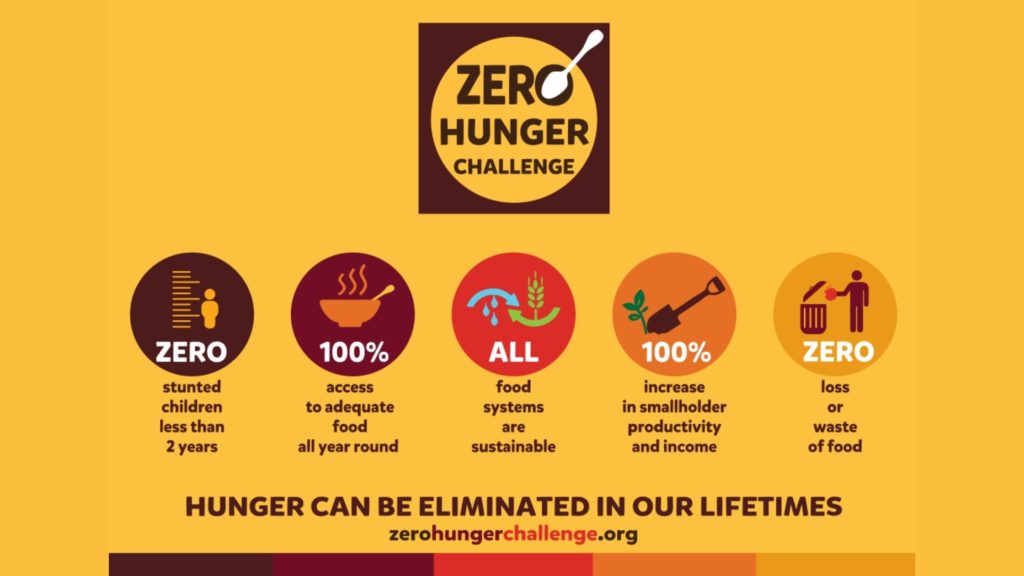
In their approaches to agriculture, the study calls on governments to mainstream nutrition; work to reduce cost-escalating variables in food production, storage, transport, distribution, and marketing, including by reducing inefficiencies and food loss and waste; encourage local small-scale producers to grow and sell more nutritious foods and secure their access to markets; prioritize children’s nutrition.
What does UNICEF do to reduce these levels of hunger?
In particular, UNICEF, except for doing all that mentioned above, helps nations combat hunger and provide funding for school meals. Countries recognize that school food programs establish the basis for a safe learning atmosphere. In school lunches and foods common among children outside the classroom, India and Namibia integrate micronutrient fortification. School meals in Bolivia include natural, local, and cultural foods and children.
UNICEF has its own goals like zero hunger by 2030, which are quite ambitious, and to get there, a lot of smart work will be required. Feeding programs that work under UNICEF can be expanded and replicated need to be studied, documented, and shared. Those developing and implementing these services at the ministry and community level also offer helpful insights to nations updating their school meal and nutrition policies. UNICEF also believes that together, if we engage in schools and nutrition and share our results, mistakes, and milestones, we will create a brighter future for all young learners globally, which is a wonderful thing.
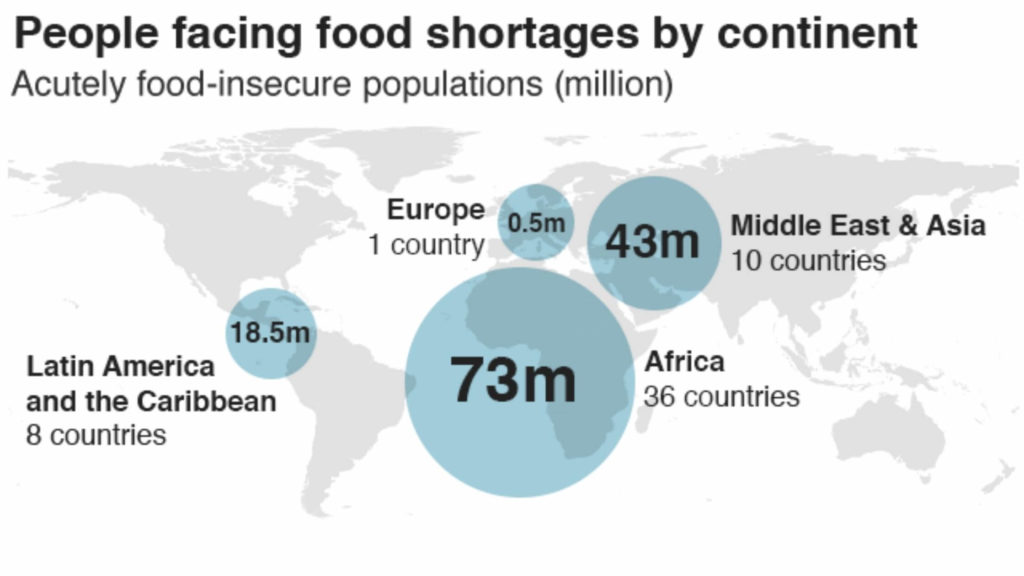
Conclusion
In the end, I would want to say, as rightly said by Buzz Aldrin, “that if we can conquer space. We can conquer hunger. “and this quote should hit all our hearts and minds hard so that we sort our priorities right and work towards humankind and make our very own planet Earth a beautiful place to live in. Also, we must always remember that we rise by lifting others. The more good we do for people, the better will happen to our personalities. The mere thought about this is so beautifully wonderful, and I can’t stop thinking about it, I hope this hits you like home, and you take a step to feed someone and send that person’s hunger.
Follow us on FACEBOOK, INSTAGRAM and TWITTER to stay connected.
ALSO READ- What is Global Hunger Index? Why Yemen is falling behind in GHI?

